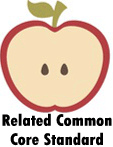What is a Flashback in a Story?
Have you ever wondered what a writer does when there's an absolute need to explain something vital to a narrative that occurred before the story began? They simply use a "Flashback" to go back in time. Not sure what is it? Just think of the word itself. A Flashback is when you flash back to the past. Or say it's a narrative device in which a story's chronological course is interrupted to convey information about a previous event to help readers better understand the present-day scenario.
The Origin of "Flashback"
Psychologist William James used the term "flashback" in his book The Principles of Psychology in 1890; however, it is important to note that the approach itself is far older than Homer's Odyssey—one of two major ancient Greek epic poems attributed to Homer, published in 1614. But, it was not until the early 1900s that the name "flashback" was used to refer to a narrative device, and the rest is history. Today, flashbacks are widespread in fictional media, found in almost every genre.
Occasional Vs. Structural Flashbacks
For the most part, flashbacks may be divided into two categories: occasional and structural. Occasional flashbacks are simply the ones that occasionally occur, even though they may appear once or twice but are not incorporated into the fundamental framework of the narrative. However, structural flashbacks occur throughout, serving the same purpose as load-bearing walls in terms of structure. The whole structure (or, more accurately, the entire plot) may crumble without flashbacks.
The Function of Flashbacks in Literature
Internal memory might be the real-life analog of the literary flashback. As we go about our everyday lives, we continually recall past events. Sometimes, as the title implies, it's only a flash of light. Other times, we may also dwell on a particular incident for a lengthy period, as in the case of depression. In short, it's something we all do daily.
When readers read a piece of literature with flashbacks, they automatically recognize that the character is not going back in time but physically experiencing their history. The Odyssey, The Five People You Meet in Heaven, Catcher in the Rye, To Kill A Mockingbird, A Separate Peace, and The Things They Carried are some of the notable examples of flashbacks in literature.
For example, Homer's The Odyssey employs flashbacks to frame the story of Odysseus' journeys throughout the world. All of the stories in books 9 through 12 are delivered in flashback. While at the palace of the Phaeacians, Odysseus narrates tales that demonstrate his courage and craftiness. This helps to portray Odysseus as a hero while also revealing how his previous experiences influence his present relationships with the people he encounters in the story.
Flashbacks are a narrative device that is sometimes misinterpreted. Not all stories can deal with the tonal change which occurs when the focus is diverted from the primary plot. This is one of the reasons why the conventional wisdom on flashbacks is "never use them – if your tale can be conveyed chronologically without breaking from the primary plot line." However, if your story calls for one, make the most out of it.
